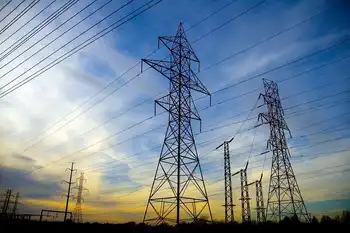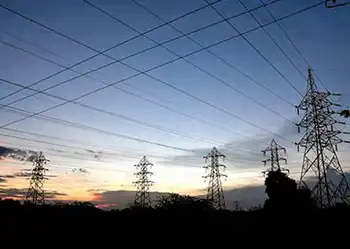A few watts short of an idea
By National Post
CSA Z463 Electrical Maintenance -
Our customized live online or in‑person group training can be delivered to your staff at your location.

- Live Online
- 6 hours Instructor-led
- Group Training Available
On the way out are the old incandescent bulbs, the warmglow ones consumers like, to make way for the new compact fluorescent light (CFL) bulbs, the ones that turn your living room into the lighting equivalent of Wong's Kirkland Lake Chinese Food Restaurant, circa 1950, the ones you can't read by, the ones governments can't even give away.
It should be no surprise that this "green" policy comes with the enthusiastic support of lightbulb makers. General Electric is on board, following a global trend as the world's bulb distributors and manufacturers eye a bazillion-dollar market-expansion bonanza. It's hard to tell who's pushing this bandwagon the hardest, green activists or corporate plunderers eager to cash in on the easiest sell in the world, a government mandate that forces everyone to buy your product.
Arm in arm with green activists, the industry has managed to get Australia, California, New Jersey, Europe, Venezuala and other states to set about replacing upwards of five billion old bulbs with new ones by varying deadlines, ranging from 2008 to 2012.
These are all election ploys by politicians, so I predict these deadlines will not hold, or if governments do try to enforce them, the world is about to crash into a global light-bulb shortage.
Here's why: Aware that the old incandescent bulbs are about to be taken off the market, consumers will begin stockpiling the old bulbs and hoarding them for future use. Some might even start right now, building a long-term supply base to avoid the gloomy prospect of Third World fluorescent lighting. A black market in incandescents seems inevitable.
In Europe, and the same can be expected in Ontario, industry also wants European Union bureaucrats to put "incentives" in place to get people to buy bulbs they don't want. Europe's lighting cartel - GE, Philips, Siemens - also has a 66% "anti-dumping" tariff in place to protect them against CFL bulbs from China, which already controls 70% of the global market. Chinese bulb makers, needless to say, are rejoicing at the West's headlong rush to make the world economy safe for more Chinese products.
The reasons for forcing all citizens to adopt inferior lighting are twofold. First, there's the greenhouse gas-climate change scare.
"This action alone represents a huge step forward in reducing greenhouse gas emissions," said Ontario Environment Minister Laurel Broten.
"It's the equivalent of taking 250,000 cars off the road."
Ontario, however, currently adds as many as 200,000 new cars a year to its roads, which means that all the light bulb gains by 2012 are likely to have been cancelled four times over by the addition of as many as a million new cars.
Ontario's second reason for the great bulb conversion is to save electricity.
Thanks to Liberal policy, Ontario could well run out of power sometime over the next few years. Canadian Tire stores in Ontario already promote diesel generators to protect against local hydro blackouts.
To cover for bad power policy run out of the Premier's office, the province will try to fix the shortage problem by managing demand and forcing people to cut back and change all their bulbs, not to mention wash their clothes in cold water and other savings plans that actually drive up the cost of electricity.
Whether the bulbs themselves are worth the money is another question that governments apparently intend to ask later.
Aside from the fact CFL bulbs only come in lower wattages, are slow to light up, are only efficient if left on for long periods and give off a "less pleasing" light, they also come embedded with small quantities of mercury, a substance most governments are trying to ban. But here's the corporate twist.
General Electric, which stands behind the global bulb campaign, seems to be playing a bit of a corporate strategy game here.
In February, GE world headquarters suggested in a statement that the alternative to the old incandescent bulb may not be CFL bulbs at all, but a new GE version of the incandescent bulb.
The company said it had scored an "advancement in incandescent technology." These new high-efficiency incandescent bulbs are "targeted for market by 2010."
These bulbs will not be as efficient as fluorescent, but will presumably meet the new efficiency targets to be set by Ontario and other governments.
It's a tricky business. A 100 watt incandescent produces 15 lumens of light per watt.
A fluorescent might generate 80 lumens per watt, but GE's new bulbs aim to produce maybe 30 lumens per watt, assuming they make it to market by 2010 as targeted.
"Potentially," says GE, its new technology could "ultimately" deliver a bulb as efficient as fluorescent.
So, Ontario will ban the old bulbs, set a standard that conforms with GE's new patented standard, and then legislate GE's new bulbs into existence. Will greens buy this?
Maybe you don't need to start hoarding incandescents just yet. But stay vigilant and keep the porch light on.











